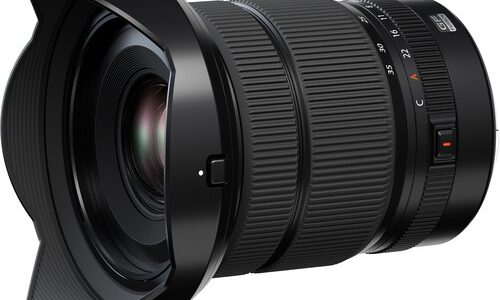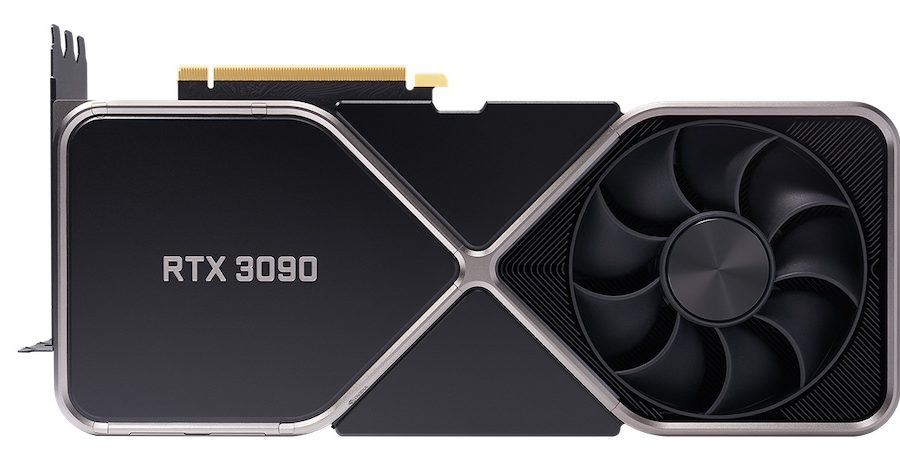

Accessories
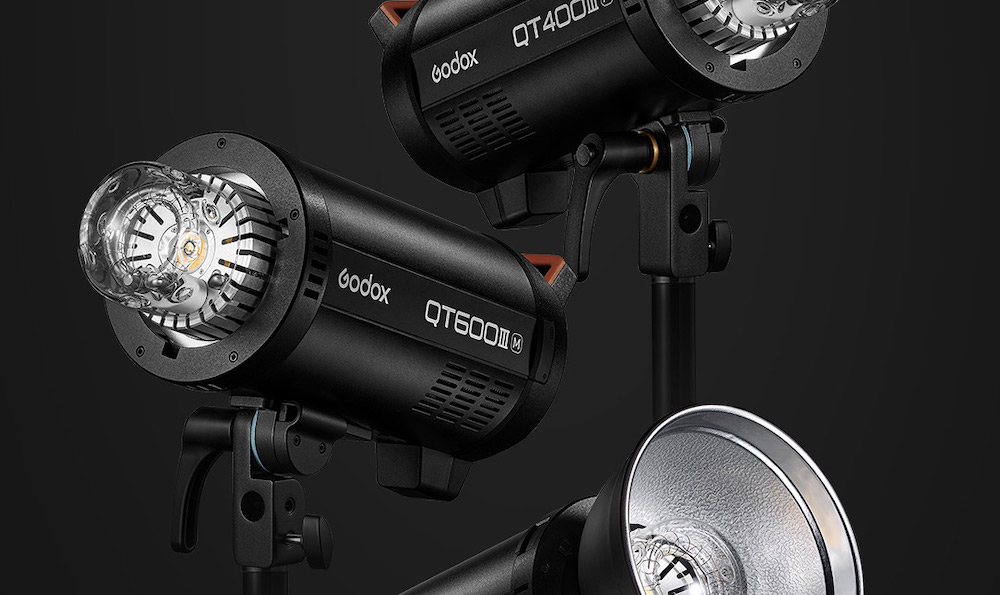
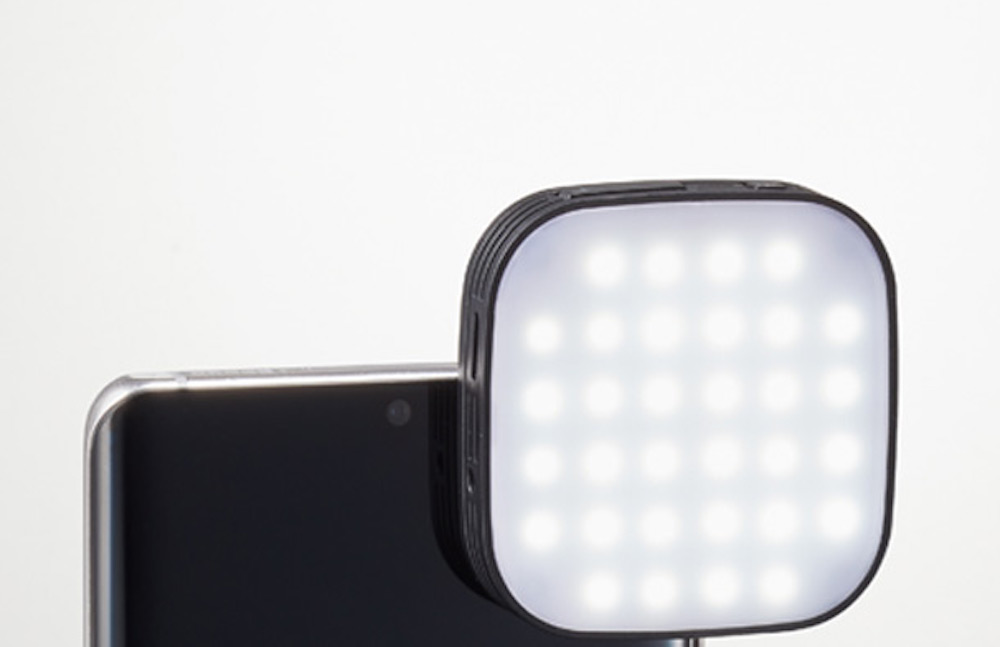
Tripods, heads, batteries, flash and similar smaller accessories are in an interesting position. Chinese companies selling directly have come into these spaces in force in the past few years. Some of them are now well-known brands in their own right (Godox, Benro, Sirui, Nitecore, etc.), while others are introducing products on Kickstarter or Amazon Marketplace. They are often not new companies, but (like the “small” lensmakers), longtime producers who are only now selling to consumers. Nikon may be exiting the flash business, collaborating instead with Nissin and Profoto. I’m not sure Fujifilm has ever (recently) been IN the flash business – most of their flashes look suspiciously like units available from Nissin, Sunpak and others. The best of the Chinese manufacturers are excellent, and, once they are available from regular camera stores, they are no riskier than anything else. I would certainly not pay 2-3x as much for a camera manufacturer flash than a Godox at this point – Godox is a major, well-reviewed brand. I’ve got a wedding to shoot in April, and I’ll almost certainly use Godox or similar flash (I’ll test it well in advance, but I’d take the same precaution if it were Fujifilm, Nikon, Canon or Sony).
The really cheap stuff that is available only on Kickstarter and Amazon Marketplace IS riskier, because those channels are carefully set up to avoid liability and warranty. The manufacturer is generally in China and has no presence anywhere else, meaning they can only be reached in Chinese courts. The rules of Kickstarter and Amazon Marketplace make it clear that they are only platforms – don’t sue us if your battery explodes or your tripod collapses – we merely connected you to the maker. I would never use a battery or a battery charger from a source like that – a lithium ion battery can hurt you, so I wouldn’t use one where the whole intent of the distribution system is to make sure nobody’s liable. If it’s something that can’t actually hurt the photographer, I’d decide based on how sad I’d be in the worst possible failure, and how much harder it is to get something better. I would never put my GFX 100S on a cheap Kickstarter or Amazon Marketplace support, but I might very well use one for a GoPro in a timelapse rig – the GoPro is a lot lighter, and the potential loss is a lot less, both because it’s cheaper and since it’s less likely to be damaged.
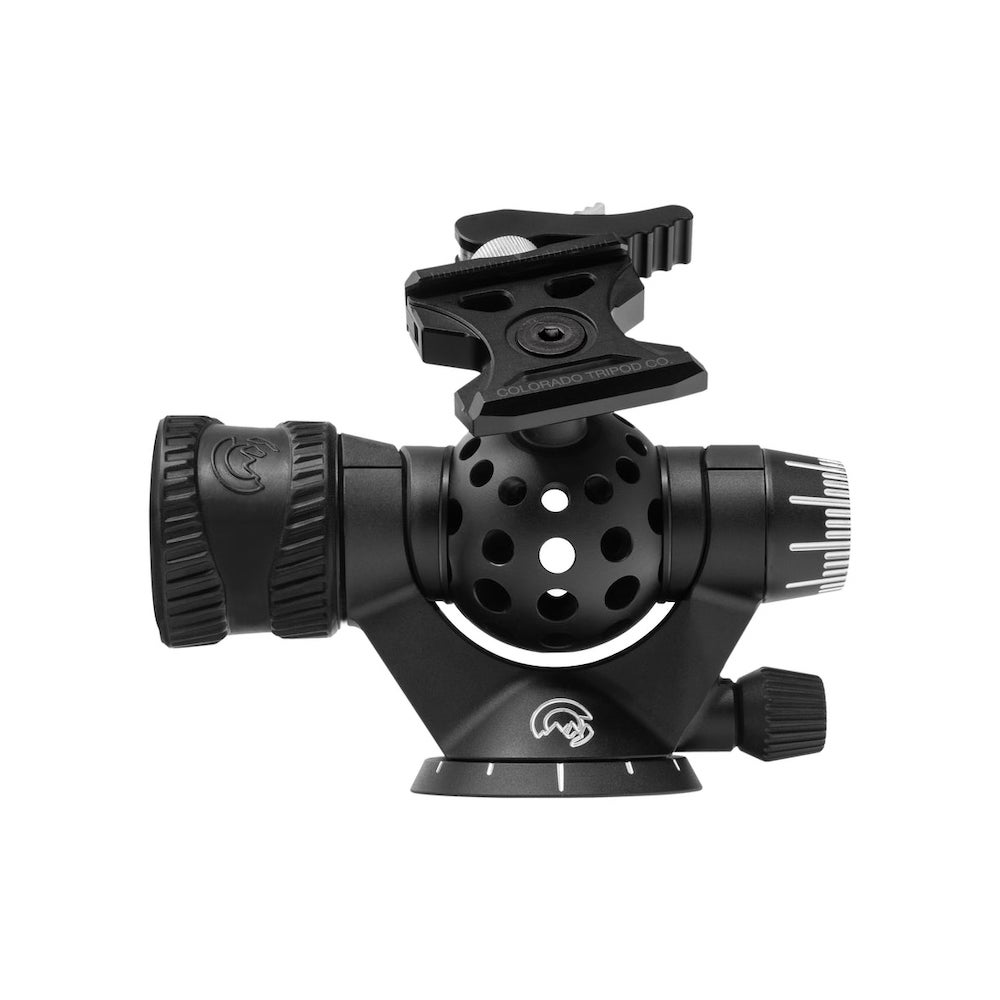
On the other extreme, there are an increasing number of boutique tripod companies in particular – Really Right Stuff was the pioneer in this space, but Peak Design, Colorado Tripod Company and others have joined them. Many of these companies have taken a position above the top of established lines – a Really Right Stuff tripod sells at a premium above even a Gitzo, for example. They sell based on innovation, build quality and personal service. There are also an increasing number of these companies in areas like filters, remote triggers and camera bags – small firms anywhere in the world who have an innovative idea and decide to sell it.
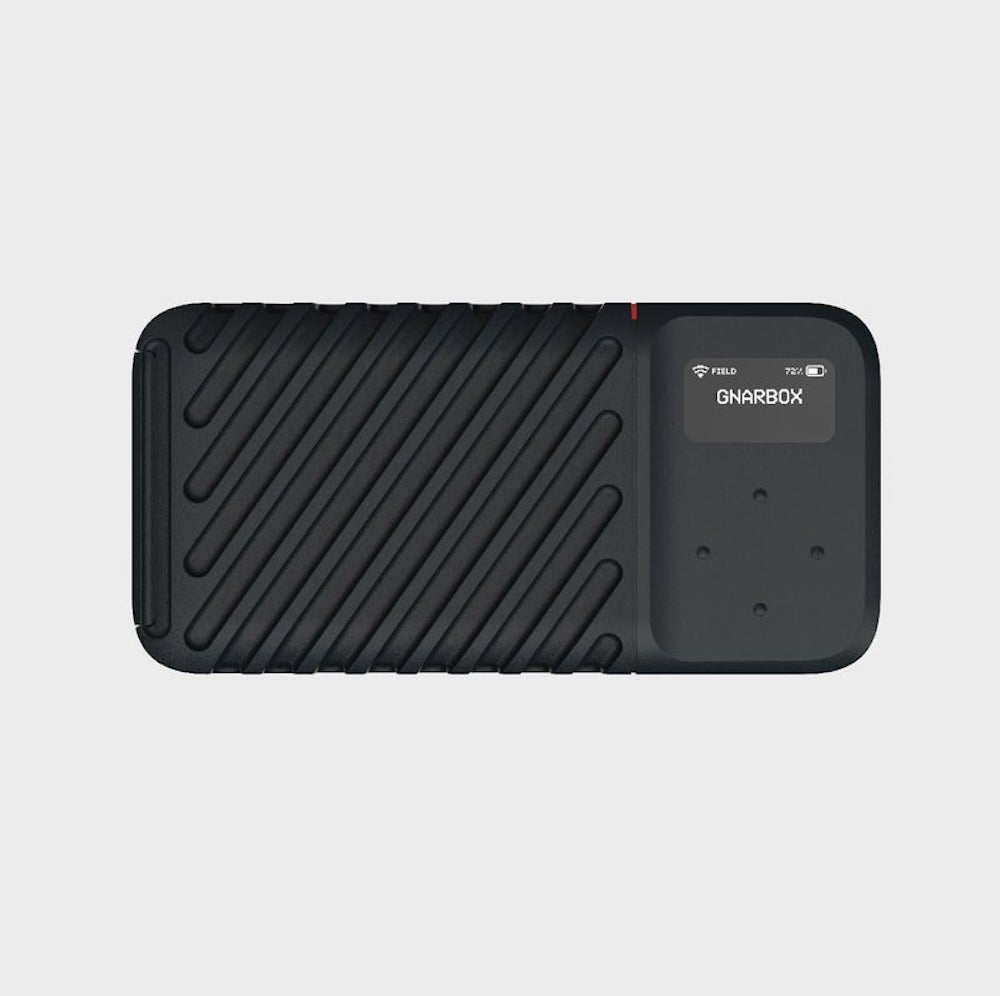
A lot of this gear appears on Kickstarter (along with a lot of much lower-end gear, and they can be hard to tell apart), and it’s worth remembering that Kickstarter is an elaborate liability shield. If it’s a filter, that’s probably not a concern, and hopefully a camera bag won’t rip before you notice, but something more likely to damage a camera (or, worse yet, a photographer) is also more likely to be an issue. A Kickstarter from a company you otherwise trust is probably OK (Peak Design has Kickstartered stuff), but one from someone you’ve never heard of is a caution sign. Another risk with Kickstarters is that a lot of large, low-end manufacturers are running Kickstarters under different names.
A lot of Kickstarter lenses turn out to be from the lower end of the lens market, dressed up in “German” looking barrels and sold for higher prices with the lower end name missing. There may be nothing wrong with the inexpensive lens for your needs, but do you need to pay twice as much for one in a knurled barrel?
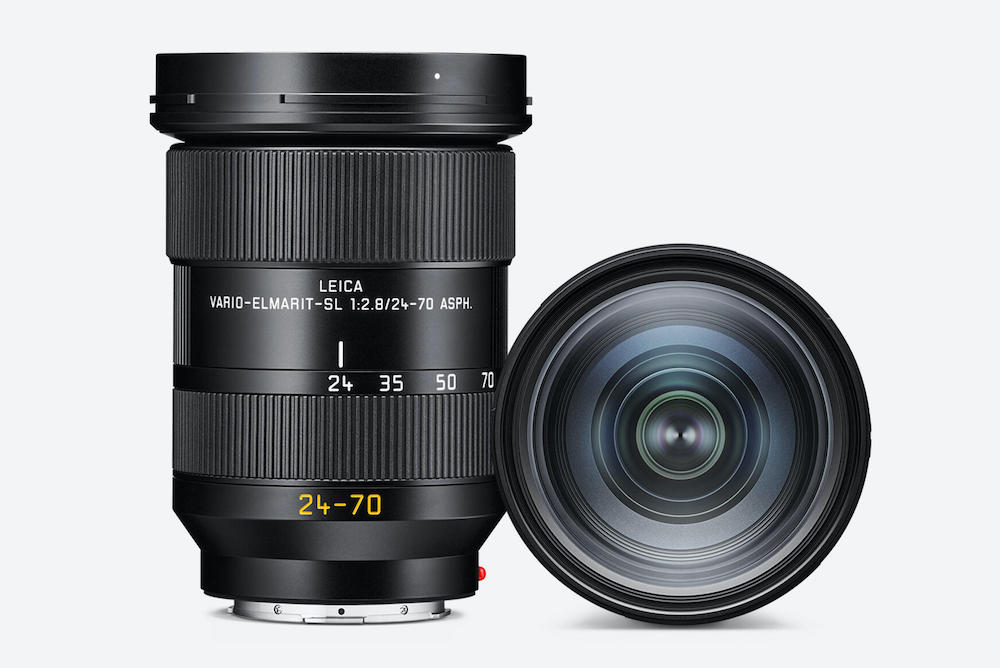
We’ve even seen this type of rebranding between high-end manufacturers, although not involving Kickstarter. Leica has rebranded the Sigma ART 24-70mm f2.8, and is selling it for more than twice the price of the Sigma. Sigma is a high-end lens manufacturer, and that particular lens has an excellent reputation (I’ve used it extensively and spoken about it on here – the reputation is deserved). Sigma will happily sell you that lens in L mount for $1099. If you want a version that says Leica on it, that one will be $2795.
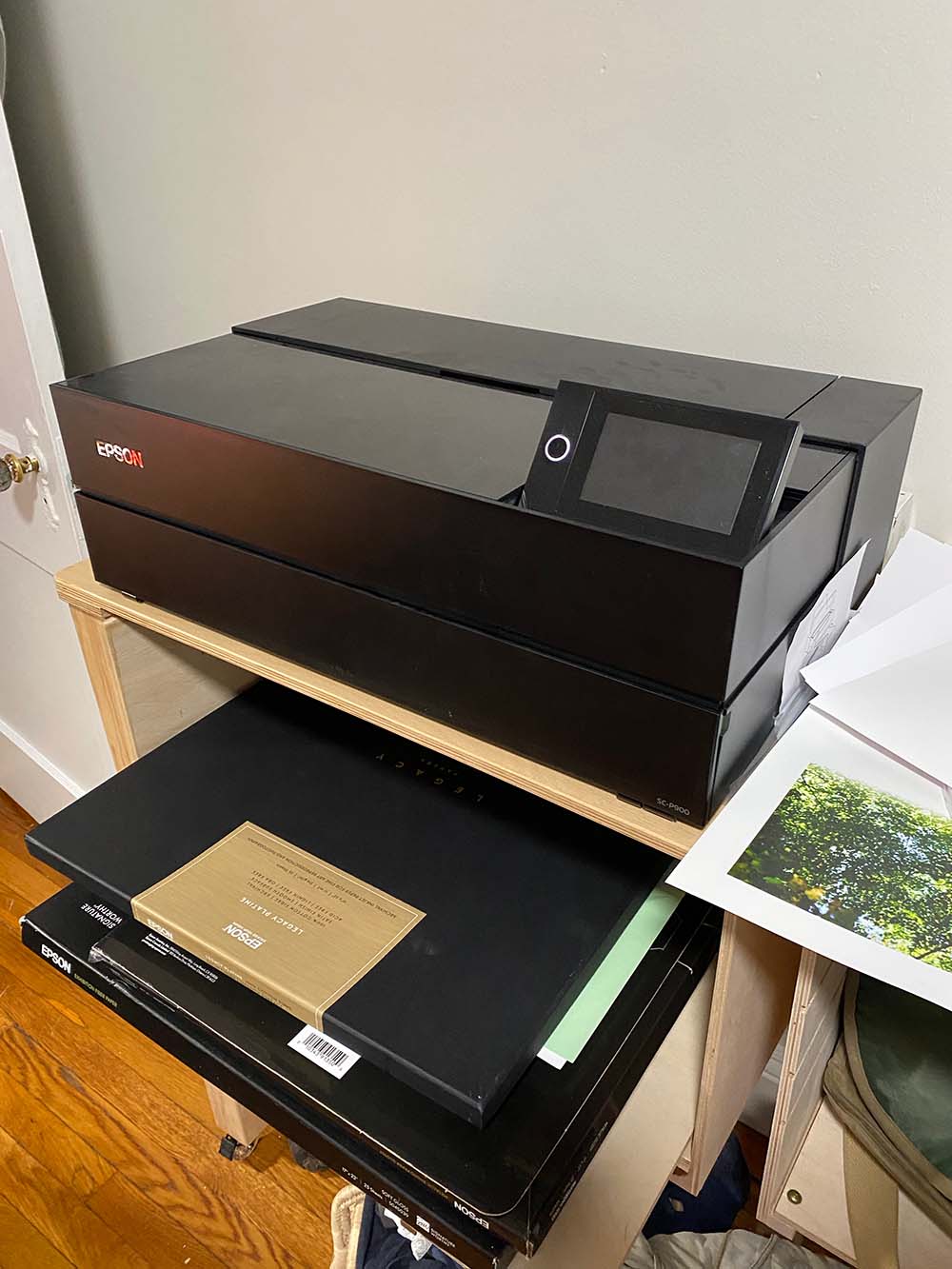
Epson is very safe in the printer space, and I am optimistic about Canon as well. Canon may have missed an important introduction this year, including a new top-end inkset to replace Lucia Pro 12, but that seems to be delayed into 2022, not pulled. Epson’s inksets and printers are in excellent shape, with just about every product that matters to photographers having been released in the last couple of years. There are a couple of products I’d like to see them add (see the ET-8550 and P900 reviews for detailed discussions, summarized below).
I’d like to see both a 24” (and maybe even a 36” or 44”) version of a P900 type printer and an eight-color version of the ET-8550. Both would fill gaps in Epson’s lineup – there’s a lot of room between the P900 and the P7570, and the P5000 has the wrong collection of upgrades for many photographers. Anyone short of a very busy studio would rather have a slower but compact 24” printer with both sheet and roll capability than a very fast, very production oriented printer with no additional carriage width over the P900. Production shops would, of course, prefer the P5000 over a slower, compact 24” model. There is also significant room between the ET-8550 and the P900, which is only somewhat occupied by the P700. I think there’s also room for an eight-color EcoTank printer, which won’t have the print longevity of the P700, but it will be a lot cheaper to operate – a great machine for learning printing.
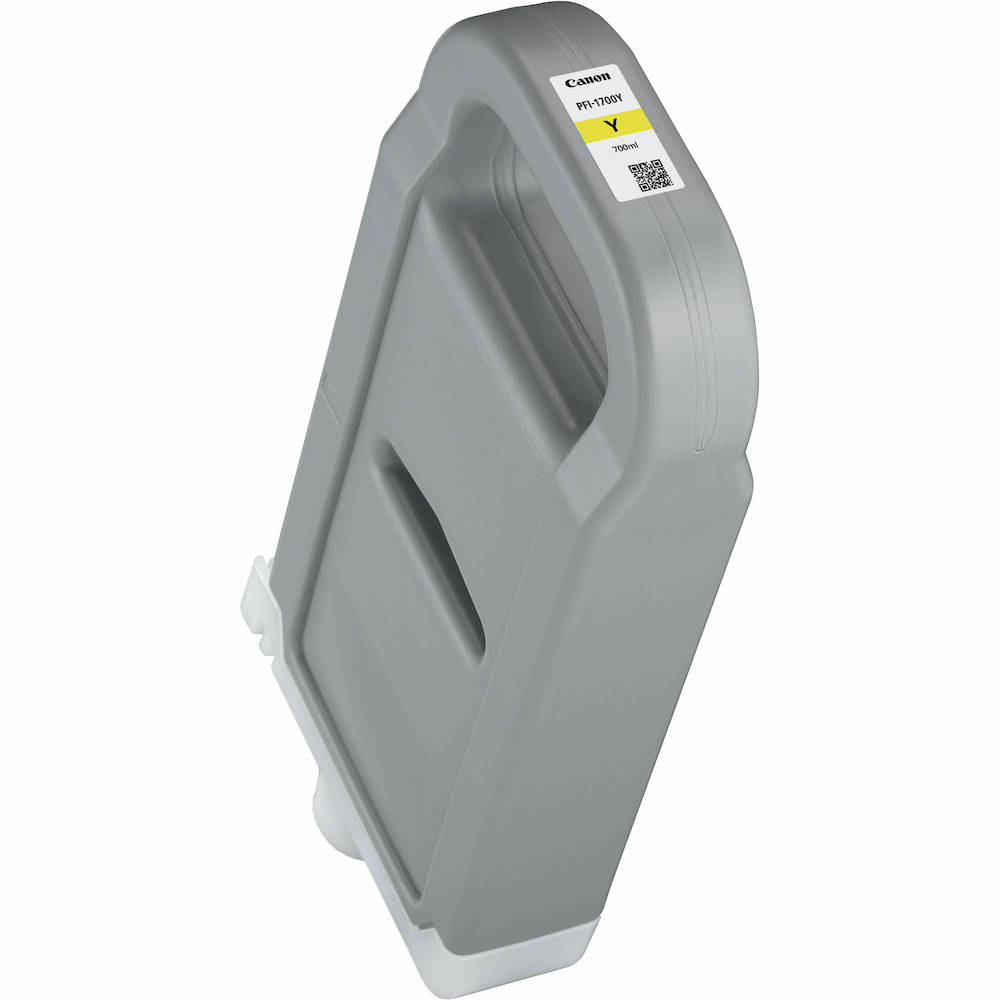
Canon’s printer lineup is currently well behind Epson’s – essentially due to supply chain issues and yellow ink. Yellow ink has always been the Achilles’ heel of pigment printing – there has long been a choice between a really bright yellow and a really archival yellow. HP has traditionally used a really archival yellow, always getting excellent print life ratings, but with significantly reduced gamut in warm tones. Canon’s latest Lucia Pro inkset uses a really bright yellow, and they got significantly better warm tones than their previous inksets. Unfortunately, their print life ratings aren’t in the Epson/HP range. Under expensive UV glass on the most archival papers they still break 100 years – but there are ratings for prints unprotected by glass on common papers that are in the low 20s of years. Epson and HP are breaking 100 years without glass, and are running tests to completion at 250+ years behind glass. While I wouldn’t completely trust accelerated fading tests’ absolute numbers, the relative relationships are pretty good – Epson’s latest inkset is about 3 times as archival as Canon’s, and HP approaches 4 times. The breakthrough Epson has had in the past few years (it came in with the P5000/7000/9000 series in 2015, and may have been improved again in the most recent printers) is that they have a truly archival yellow that is also very bright.
Canon needs to match that yellow in their new inkset, and there is some speculation that they have a new inkset on the way. The existing Lucia Pro inkset is from 2015, and Epson has released a couple of upgrades since then while Canon has stayed with their existing inks. When Canon replaced the smaller printers this year, it seemed like the larger units were also a possibility. A couple of rumor sites (take it with as much salt as you desire) have reported that the next generation of Canon pro inkjets were due this fall until supply chain issues intervened, and that they will, in fact, feature a new inkset. There are absolutely no details on what might change in the inks, so a new, equally bright, more archival yellow is something they need, but may or may not have. Any major Canon pro inkset would be important news for 2022, especially one with a significantly improved yellow.
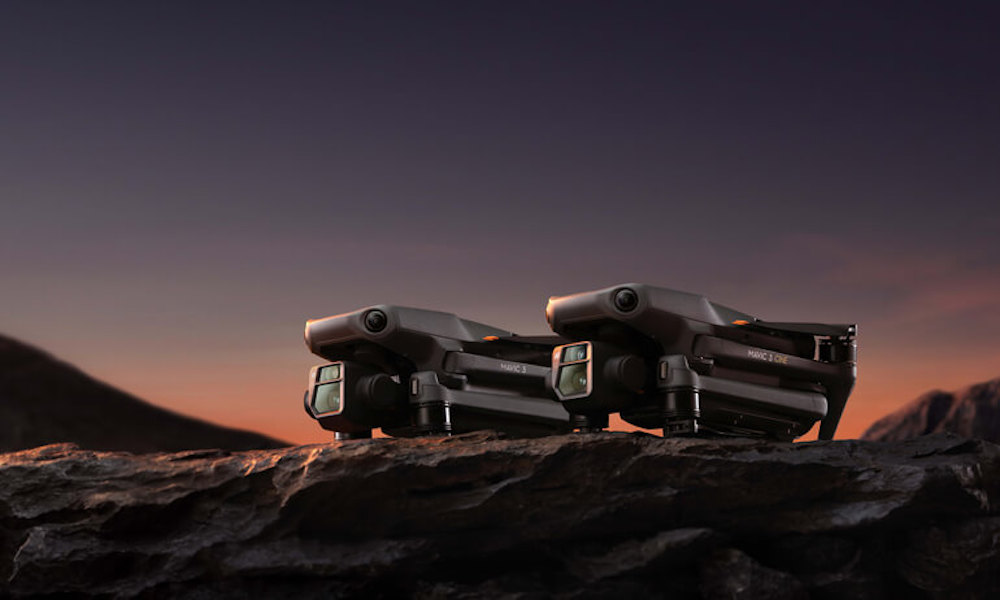
Drone cameras have improved tremendously in recent years, to the point where they offer a new point of view for serious photography. DJi’s new Mavic 3 (which I’d love to review at some point) uses a 4/3” sensor that is significantly larger than anything we’ve seen on a consumer drone. It’s not clear if this is the Same Old Sensor that shows up in Micro 43 cameras or something newer. The reviews I’ve seen are very enthusiastic about the image quality, but they aren’t generally in publications that review high-end photo equipment (and DPReview, who does review serious cameras, reviewed it more like a phone or gimbal camera than like a mirrorless camera – no serious image quality tests). Even if it’s the Same Old Sensor, flying it on a drone is a use where its compactness could make a real difference.
Most drones below $5000 have used cell phone sensors in the range of ½” or 2/3”, while several models in the past year or so have used 1” sensors akin to those in high-end compact cameras. 4/3” is a huge upgrade over phone-type sensors, and a significant upgrade even over a 1” sensor. 4/3” is probably the entry point to a sensor that supports serious printing, opening the possibility of getting printable photographs out of a drone that a photographer might add to their kit. The lens on the Mavic 3 is a fixed 24mm equivalent with Hasselblad branding, and reviews indicate that it is a high-quality lens. Previously, nothing short of a $5000+ DJI Inspire drone offered more than a 1” sensor.
Some user reviews indicate that the firmware in the Mavic 3 isn’t quite finished. A number of features are being held back for a January firmware update, and some users have been having no issues while others are experiencing quite a few bugs. Another oddity is that one desirable configuration is not yet available. The Mavic 3 starts with a base configuration for $2199 (one battery, no case, no filters). The next step up is a Fly More combo for $2999 (including two extra $209 batteries, a $89 battery charging hub that makes charging more convenient, a $179 set of ND filters and a $319 case plus a few smaller items). It’s about a $200 discount if you want all the accessories. The very expensive Cine Premium combo ($4999) comes with everything in the Fly More combo plus the RC Pro remote with a screen, a 1 TB built in SSD and the high-end ProRes recording modes unlocked. The ProRes unlock is probably just firmware – hiding modes behind paywalls is standard practice in the video industry, although it isn’t common in still photography. It may require the SSD (which is not user-installable as far as I know)– is a MicroSD card fast enough to record ProRes? The configuration they don’t sell is with the RC Pro, but without the expensive video package. The RC Pro is a very expensive (perhaps overpriced) accessory at $1199, but there should be some trade-in credit for the standard remote, and they might offer a discount. If DJI were willing to sell the RC Pro Fly More package for $3449 (the price increment of adding a RC Pro to an Air 2S Fly More package is $450), it would be very appealing to serious drone photographers.
Two other notable developments in drones are DJI’s affordable Air 2S, ranging from $999 (bare-bones) to $1749 (with Fly More plus RC Pro), which is the least expensive drone with a 1” sensor and a full set of obstacle avoidance sensors and Sony’s Airpeak S1, a $9000 drone that interfaces with full-frame Alpha cameras. Drones that can fly a full-scale camera have traditionally been closer to $20,000, and have required more integration – presumably, a whole package from drone to gimbal to camera to lens is available at Sony dealers who will carry the Airpeak line, and support for the whole thing comes from Sony’s Airpeak team. Looking forward, we’ll probably see more reasonably priced drones with better and better cameras (will DJI or someone else get an APS-C sensor into a compact prosumer drone?), and we may see more Airpeak style packages for truly professional imaging.
Computers and Software
The big news of 2021 was the continuing adventures of Apple’s M1 processor family. We first met the M1 in late 2020, in a selection of low-end Macs that performed far better on common photo-oriented tasks than they had any right to. What WAS this processor? A MacBook Air that was performing about like a 16” MacBook Pro? A Mac Mini that was giving high-end iMacs a run for their money? These first machines were not a solution for most serious photographers, because they had significant limitations (most notably a very low 16 GB RAM limit, also some graphics limitations including very little multi-monitor support) – but their performance was extremely intriguing.

The first thing we saw in 2021 from the M1 was its appearance in the iPad Pro in April. Again, what IS this thing? It runs in a 1 lb tablet with no fans? Yet it performs like a workstation laptop??? It seems to have (or at least be configurable to) a power envelope in the 5-7 watt range, 10 watts at the upper end, because anything hotter wouldn’t fit in a 11” iPad chassis. The iPad version performs well enough that it doesn’t seem to be a severely slowed-down model nor to have severe thermal limits. The M1 iPad Pro (reviewed here back in August) is a very impressive piece of hardware that is being held back by iPadOS – both by what Apple lets the OS do, and by what apps third parties are making for iPads.
At the end of 2020, the obvious next step was higher-end computers that used the M1 technology. How would a version of the M1 with more than four high-performance cores perform? Would Apple move in the direction of more cores, or would they develop a computer-specific core, one not shared with iPhones and iPads, that offered even higher performance per core?
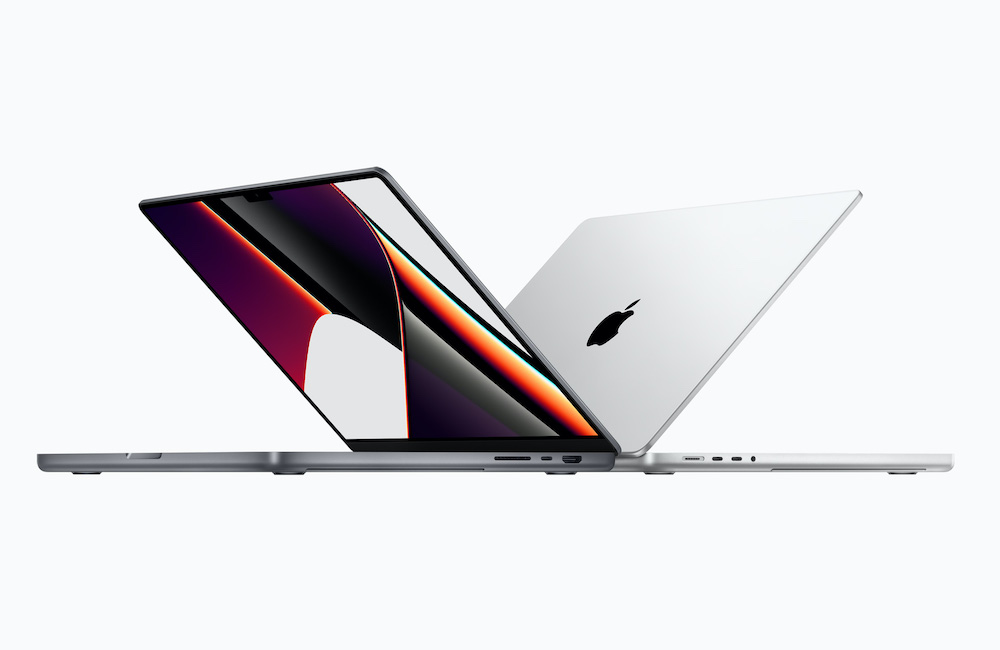
In October of 2021, Apple began to answer those questions with the release of the M1 Pro and M1 Max MacBook Pros. The answer to “how would a “big M1” perform” is “spectacularly”. I haven’t used one myself , but all the early reviews indicate that most aspects of performance scale almost perfectly. The M1 Max has twice the processor cores of the original M1, and is around twice as fast on CPU-bound tasks. It has four times the graphics cores and is, unsurprisingly, about four times as fast on GPU tasks. It has many fewer limits than its predecessor – external display support has gone from dismal to very good, and maximum RAM has gone from a tiny 16 GB to 64 GB, standard for a high-end laptop. The M1 architecture and MacOS use RAM more efficiently than Intel architecture and Windows, plus these machines have extremely fast SSDs that make MacOS’ virtual memory features more effective. As a result, they “feel” like they have more RAM than they do – leaving the new MacBook Pro ahead of all but the very rare 128 GB laptops in effective RAM.
They used the same cores (borrowed from the iPad and iPhone) as they had in the lower-end laptops, simply more of them. So far, that seems to be scaling quite well – the machines with eight “big” or “performance” cores are about twice as fast as the ones with four “big” cores – the “small” or “efficiency” cores seem to have little effect on overall performance (their value comes in keeping background tasks like e-mail from slowing down the “big” cores and in increasing battery life during simple tasks). GPU core counts seem to scale similarly – but this was expected, since GPUs often scale very well. This scaling has produced a remarkably fast laptop. On many benchmarks, a full-powered M1 Max MacBook Pro performs as well as a relatively high-end desktop workstation – much more powerful than any Intel-based laptop workstation. GPU performance is higher than any reasonable laptop GPU, but there are some large gaming laptops that use extraordinarily powerful GPUs, with severe power and cooling implications. The most powerful of these GPUs can outrun the new MacBook Pros, but they are using 100 watts or more, leaving battery operation a joke and requiring loud fans to cool. The MacBook Pro attains similar performance with a fraction of the power consumption.

Two questions remain, since it seems very likely that Apple is going to continue with a “lots of iPhone cores” strategy. First, can the CPU cores continue to scale? Will a high-end iMac with 16 “big” cores be twice as fast as a MacBook Pro with eight? Will a Mac Pro with 32 cores double the 16-core iMac’s performance? Second, what kinds of machines will Apple build? Will we see a 16-core iMac at all, or will the iMac use the same exact chips as the MacBook Pro? The only M1 Mac that has been disappointing is the 24” iMac – it literally uses the hardware of an iPad in a desktop computer – the low-end Macs that use the same hardware are either very inexpensive or ultraportable, and the 24” iMac is neither. There are many use cases, mostly where the very low 16 GB RAM limit is an issue, where a 2021 24” iMac is slower than a well-configured previous-generation 21.5” iMac.
I can see three possible ways a 27” or larger iMac might be configured. One is as a home/content consumption computer that would disappoint photographers – with the M1 Pro, but not the M1 Max – six or eight big cores, 16 graphics cores and a 32 GB RAM limit? If this iMac shows up, I would sincerely hope it’s the less powerful of a couple of models (but it would be a similar redesign to what Apple did with the 24” iMac, which moved down-market.). The second is configurations identical to the M1 Pro/Max MacBook Pros – up to eight big cores, 32 graphics cores and 64 GB of RAM. While that is a spectacular laptop, itis a powerful, but not overwhelmingly powerful desktop. The third option would be an iMac Pro with twice the power of the M1 Pro/Max laptops, which would be among the most powerful desktops in the world. Only workstations and high-end gaming PCS that cost many thousands of dollars would be able to compete.
Another issue for a high-end iMac is that the 64 GB RAM limit that is so generous for a laptop is more constraining for a high-end desktop. Since the RAM on these machines is so closely tied to the CPU, it would take slightly different chip to support more RAM (and, absent an architectural change, the only way to buy the RAM would be with the computer at Apple’s very high prices).Apple’s integrated memory is extraordinarily fast, but it also locks in their high RAM prices and makes it harder to support more RAM. Soldered RAM would be a significant drawback in a powerful desktop, but one that might be possible to work around if the maximum was high enough (128 GB), especially if Apple relents on pricing. There is much less need for a low power budget in an iMac, and the competition will be using several times the power with little consequence.
A Mac Pro raises the same questions, but even more so. The same chip that is extraordinarily fast in a laptop and would be quite fast even in an all-in-one desktop would be insufficient in a Mac Pro type machine. Even a machine twice as fast would barely be able to keep up with the highest-end single CPU Threadripper and Xeon workstations. One four times as fast would have a significant lead over most workstations, short of very esoteric multi-CPU designs. Not only is 64 GB insufficient, 128 GB would be as well. Even a 256 GB limit would be low in parts of the Mac Pro market – many machines in that class support a terabyte or two of RAM. Few of them actually have that much, but nearly unlimited RAM expandability is a hallmark of high-end workstations, and plenty of them DO have RAM configurations in the 256-512 GB range. Soldered-in RAM is untenable in a big workstation.
Apple has exceeded expectations at every turn so far with the M1/Pro/Max systems – but each step towards more powerful computers brings the architecture farther from its iPhone roots. I was concerned about the MacBook Pros, but Apple seems to have nailed them. I haven’t yet had a chance to review an M1 Max MacBook Pro, but I am trying to get ahold of a sample. I am optimistic about the next collection of Macs, while I am still curious about what, if any, issues may lie ahead – either essential capabilities omitted (Mac Pro with no reasonable RAM expansion, etc.) or designs that don’t scale. There may be no such problems at all, and Apple pulls off a very smooth transition. There may be a few disappointing machines like the 24” iMac, but with plenty of alternatives. In the worst case, there may be major obstacles, but the transition to Apple Silicon has gone well enough so far that I believe really major hassles to be unlikely.
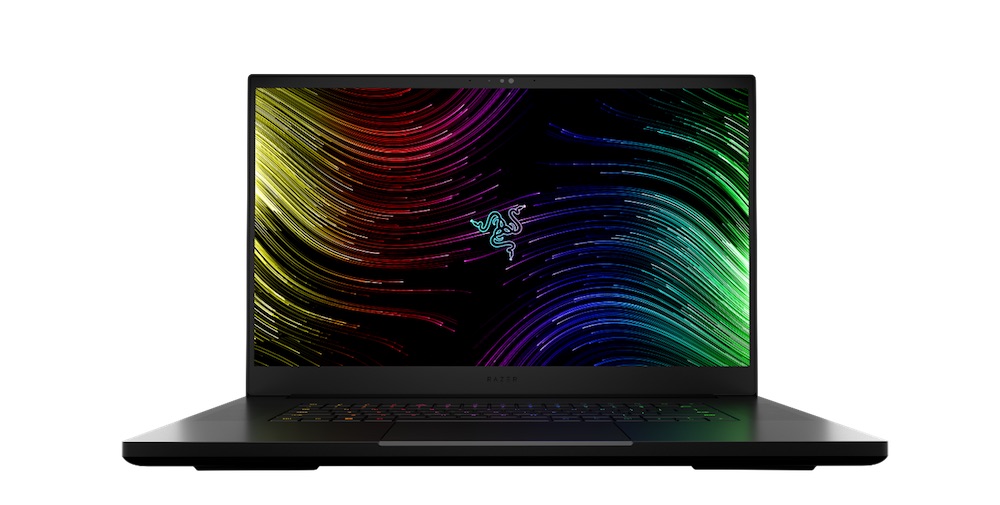
After years of stagnation, Intel has finally released a truly new generation of chips for Windows PCs, which they’re calling Alder Lake (model numbers feature a 12, e.g. Core i9-12900K) If they perform as they are expected to, they may both cut in to the edge AMD has been building in PC CPUs and challenge Apple’s M1 series. These chips are brand-new, and I’m not a Windows user, so I don’t know a lot about them. There are two important hardware features in the Alder Lake chips, one of which is almost certainly a positive, while we’ll need to see how the other one performs with different software.
The clear positive is that this is the first higher-performance Intel CPU generation built on anything newer than variations of Intel’s tired 14nm+++++ process. Intel has built a few low-power mobile CPUs on 10nm processes for several years, but nothing in the desktop or higher-end laptop space. Alder Lake is built on a 10nm process, but, because companies count process nodes differently, it is more like what many competitors call 7nm. That’s still a generation behind the cutting edge – Apple released the first processor on a 5nm node in September of 2020 (the M1 series is all 5nm), but it is respectable.
The change that we’ll have to wait and see about is that, for the first time in an Intel CPU, Alder Lake uses performance and efficiency cores. The M1 family (and every cell phone in the world) do the same thing, but Intel’s design is somewhat unusual for a full-scale computer. In the M1, and especially the M1 Pro and M1 Max, the efficiency cores are used for background tasks and light loads. The computer may run primarily on the efficiency cores if you’re just running Word and Mail, or it may use the efficiency cores in the background to check e-mail or the like while the performance cores are running Photoshop. Only a few percent of the machine’s power is in the efficiency cores (each core is about 1/3 as fast, on average, as a performance core, and on an M1 Pro or Max, there are also fewer efficiency cores), and power-hungry applications can just ignore them while benefitting from not sharing the performance cores with background tasks.
Alder Lake, on the other hand, sometimes has more efficiency cores than performance cores – most of the higher-end laptop chips use six performance and eight efficiency cores, and the i5s actually use four performance and eight efficiency cores. The efficiency cores are also faster (and more power-hungry) than M1 efficiency cores. One notable feature of higher-end Alder Lake laptops is that, while having very high total core counts, they actually have fewer performance cores than last year’s models (what were eight core models now have six performance cores, and machines that had six now have four). Overall core counts are up, but only due to the efficiency cores. This means that much of Alder Lake’s performance is in the efficiency cores (in a design where there are equal numbers of the two types, the efficiency cores are about 1/3 of the total performance), and higher performance software can’t simply ignore them.
How well will common photographic applications deal with this combination of cores? That will be an interesting feature of Alder Lake reviews. It is certainly possible that this is all handled at the processor or operating system level, and that applications don’t have to care at all. Early tests using the Adobe applications and the desktop versions of these processors (which are less weirdly configured than the laptop versions) suggest excellent performance – as good as a big Ryzen and chasing Apple’s M1 Max. Many photographic applications aren’t good at using a lot of cores, though – and now they’re being asked not only to deal with a lot of cores, but a lot of cores, some of which are slow.
The processor’s scheduling, Windows’ scheduling and possibly the ways that individual applications are designed may all have a role to play. Maybe it’ll all go smoothly, but this is a design that bears watching and benchmarking in the applications you need to use. Possible outcomes could range from Intel’s claims of around a 30% year on year performance gain (which seems to be true of the Adobe applications) to a significant loss if a particular task is mishandled. If you put a big photo export in the background while writing e-mail, it is possible that the export will be forced onto the efficiency cores only, running at about 1/3 of its potential speed. This will require testing in different versions of Windows (Windows 11 is more prepared for Alder Lake than Windows 10)), and across individual software packages.
In a best case scenario, top-end Alder Lake SKUs are supposed to be about as fast as Apple’s M1 Max or the most recent AMD Ryzens. All Ryzens seen so far use symmetric cores, and, as a rule, Alder Lake should be faster than a Ryzen whose core count matches Alder Lake’s performance core count, but slower than one that matches the TOTAL core count. Alder Lake is not supposed to display the remarkable power efficiency of the M1 series – the most powerful desktop Alder Lake chips have maximum power consumptions well over 200 watts, and even the laptop variants cross the 100 watt line at full turbo. How long the chips can sustain that kind of power draw depends on cooling and, in the case of a laptop, power availability.
The third big player in CPUs, AMD, is expected to release a new line later this year. Will they, too, go to an asymmetric design? We don’t know anything much about it yet, except that it will require a new socket (the first from AMD in years), so it won’t be a drop-in replacement for existing chips.
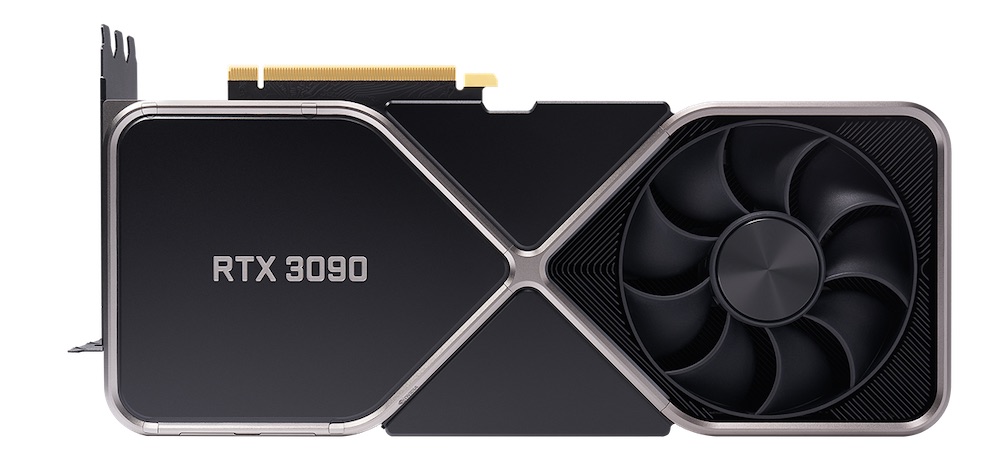
Outside of CPUS (which have gone from one reasonable choice, Intel, a few years ago to three today), the biggest news in the rest of the computer market is largely “what can and can’t you find”. Supply chain hassles and demand from cryptocurrency miners have made higher-end GPUs essentially impossible to come by at anything resembling list price. There are cases where it has made sense to buy an entire computer containing a desirable GPU, pull the GPU out and try to sell the rest of the computer (which, depending on whether the processor has integrated graphics, may or may not be functional), because the GPU may sell for almost as much as the computer. Alternatively, for photographers who are looking to upgrade a number of components including a GPU, replacing the whole computer makes more sense – and building one yourself really isn’t viable if you want a higher-end GPU, because GPUs are selling for around double their list prices.
No other part has been as hard to come by as GPUs, but there have been intermittent shortages of pretty much every part (not to mention camera gear – the year-old GFX 100S is still incredibly hard to find). Big computer builders have been able to find parts that hobbyists and boutique shops can’t, so buying a prebuilt computer has become more attractive, even to people who might often build their own. Since Macs are no longer PCs running a different operating system, the Mac vs. PC decision has become more complex – Apple now offers performance per watt that PCs simply can’t match, but you can’t use Parallels to run that PC-only plugin any more.
We haven’t seen this kind of jumps in CPU performance in a decade or more, and the increasing dominance of solid-state drives has rewritten the rules of what to expect from storage. If you are working with photos on any serious basis and don’t have at least your operating system, applications, catalog files and cache on high-performance PCIe/NVMe solid state drives, you are not getting the performance you deserve. SSD prices have declined enough as capacities rise that we are entering the time when it will become reasonable to eschew hard drives altogether, except perhaps for backup, and put our whole photo libraries on SSD. My library is now all-SSD, although a friend with a truly huge library has not made the transition yet. I suspect (at least if we can get the supply chain unsnarled) that 2022 may be the year many of us say goodbye to hard drives.

One place where technology has not kept up, at least in the US, is Internet access. I live in Cambridge, MA, the city where most of the core technologies of the Internet were invented at MIT and Bolt, Beranek and Newman. I didn’t even think to ask, when renting my current apartment, “what Internet service is available” – because I was sure the answer would be “five or six providers, including a couple of fiber choices” – after all, I’m less than two miles from MIT in one direction and BBN in the other. I was wrong – the only options were DSL and Comcast Xfinity cable that has very fast downloads (for watching movies), but glacially slow uploads – and it’s upload speed that matters for photographers using cloud backups. I’ve lived most of my adult life in Vermont, and I was almost always able to access better Internet than I can get in the Internet’s home town. I always asked before I moved into a place in Vermont, because there were some areas where there wasn’t reasonable service… I’m currently using a cellular modem, because I refuse to pay Comcast for 10 Mbps uploads. I’ve been using cloud backups for years, but that has been disrupted by not having any decent upload speeds available. Even Comcast’s very expensive “gigabit” service has only 35 Mbps uploads.
On the software side, the raw conversion titans continue to upgrade, and Photoshop continues to dominate as a post-conversion editor (and host for every plugin imaginable), with Affinity Photo available as an option for people who dislike Adobe’s subscriptions. Two long-standing questions were resolved in 2021, and we’re looking for at least one big, new introduction in 2022.
Probably the biggest “answered question” of 2021 is the fate of Lightroom Classic. A few years ago, I was REALLY worried about Lightroom Classic, as Adobe seemed to be really pushing people to switch to Lightroom CC. There was about a two-year period when Lightroom Classic got essentially no substantive upgrades (although it always supported new cameras as they came out), really calling the subscription model into question – why pay for all the new versions of a package that isn’t GETTING any new versions? Adobe also kept mum about Lightroom Classic support on M1 Macs for a long time.
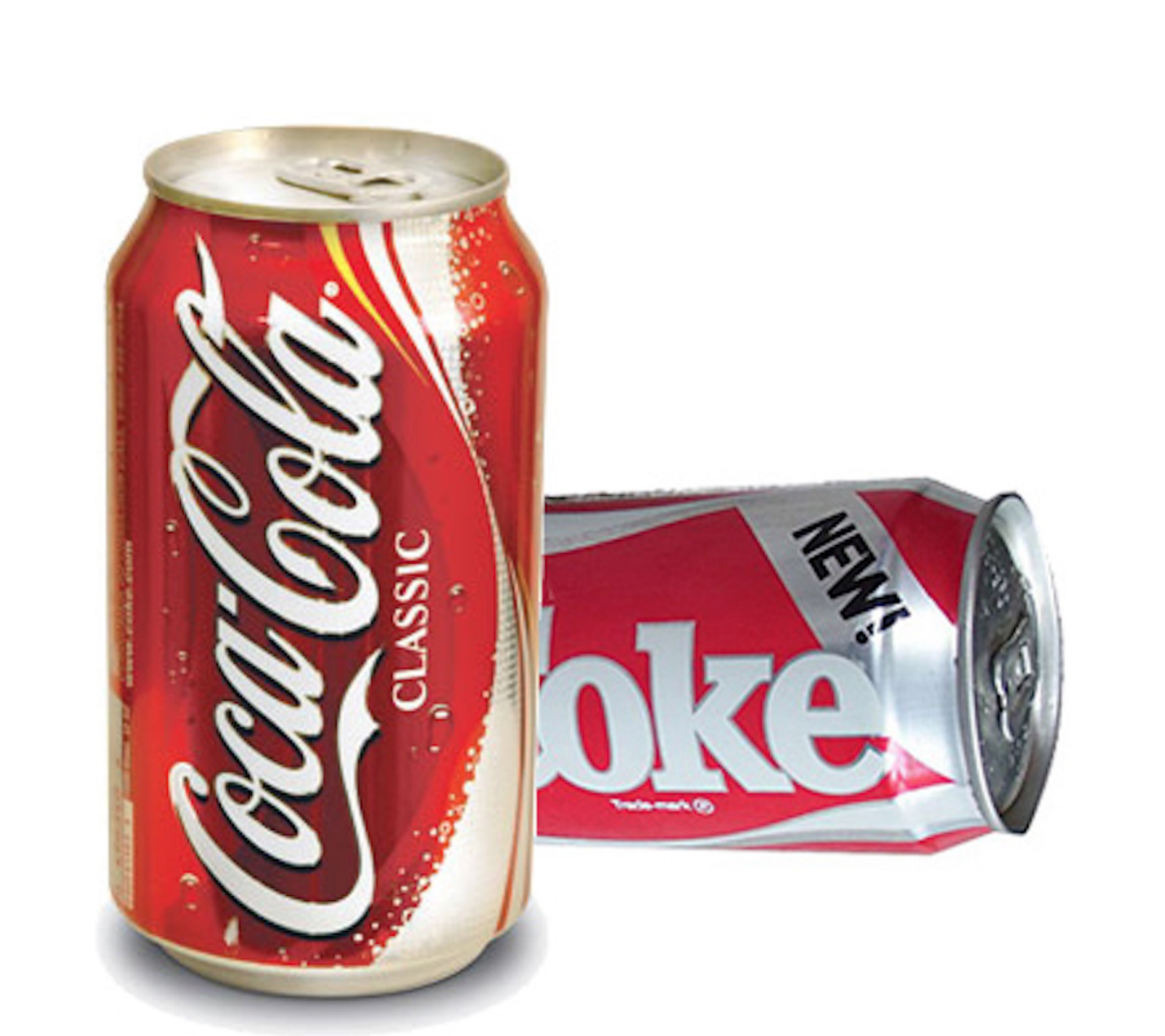
Right around the time the M1 Macs actually came out, something big changed (or at least the change became visible), and it changed in favor of Lightroom Classic. Adobe announced that Lightroom Classic WOULD make the transition to M1 native – current versions are native. New features like Enhance Details are flowing again. What happened to save Lightroom Classic? My best guess (and it’s only a guess) is that Adobe got “New Coked” – they really DID mean to gradually discontinue Lightroom Classic over a period of a few years, just like Coca-Cola meant to change the formula of Coke. The customers didn’t like New Coke (or Lightroom CC), and Pepsi (or Phase One and DxO) were celebrating. Coca-Cola reintroduced Coke Classic with the old formula (and New Coke disappeared over the next few years), and Adobe never fully discontinued Lightroom Classic before resuming substantive updates.
If they were New Coked, Adobe handled it with grace – they turned the updates back on, and have deemphasized Lightroom CC quite a bit (except that CC is all you can get on touch devices, including powerful iPads). They probably (again, a guess), proceeded along the eventual cancellation path for a year or so, then needed the second year to bring the updates back up to speed. If Adobe fully admits they were New Coked, we could even see an iPad version of Lightroom Classic. Now that they have an M1 native version on the Mac, it wouldn’t be hard at all. The M1 iPad Pros are easily powerful enough to handle even a decent-sized library. A great new feature would be library check-out and check-in – what if you could check out recent images to use on your iPad (or even your laptop), then check those seamlessly back in to your master library, along with new images imported along the way. You can do this with Lightroom CC, but it’s only seamless if you’re ALSO running CC on the desktop (in that rare case, it’s REALLY seamless, although desktop CC to desktop Classic isn’t as easy as it should be). A Classic to Classic version that either didn’t require Adobe’s cloud storage at all or required only enough to handle the number of images being transferred at a time would be a wonderful feature.
The second major bit of raw conversion news from 2021 comes from DxO. All major raw converters now work with all major cameras. Yes, this means that DxO FINALLY handles X-Trans (and it does a nice job, too). Not only does this make DxO Photo Lab available to photographers who primarily shoot Fujifilm APS-C, it also makes life a LOT easier on the large number of photographers who have a couple of systems, one of which is Fujifilm X (or even a random fixed-lens X100V hanging around). One of the big drawbacks to DxO used to be that you had to have a second raw converter if you had any X-Trans cameras, while DxO is the highest quality converter around for many cameras (including Fujifilm’s GFX series). DxO aficionados, myself included, no longer need to worry about major gaps in camera support. DxO still doesn’t support some other weird non-Bayer cameras (Sigmas using Foveon sensors and cell phones with unusual sensor designs), but none of those have anything LIKE the market penetration among serious photographers of X-Trans. Many of the weird cameras DxO doesn’t handle don’t work with other mainstream converters, either.
The biggest piece of news I’m watching in early 2022 is Capture One on the iPad. C1 is already M1 native (which makes it much easier to do an iPad port), with full iPad support promised in early 2022. If they get a much better editing solution than Lightroom CC onto powerful newer iPads, especially if they have check-in/check-out support, they could really do something useful for photographers on the move. Adobe could, of course, counter with the already M1 native Lightroom Classic – but Phase One beating Adobe to a full product on the iPad (I count Lightroom CC’s current feature set as a phone app rather than a full product, and Adobe seems to have stopped protesting that) would certainly make things interesting. When I reviewed the M1 iPad Pro, my one major complaint was that it was a very powerful machine hamstrung by phone software – a full version of Capture One would go a long way towards fixing that (and hopefully get Adobe, DxO and others moving on iPad versions).With the speed of the M1, iPads have become enormously useful field tools for ingesting, viewing and editing images. If someone gets this really right, moving from camera to iPad to desktop library (with cloud backup available, but not required), it’ll be a huge step.
Dan Wells
March 2022

Lorem ipsum dolor sit amet, consectetur adipiscing elit, sed do eiusmod tempor incididunt ut labore et dolore magna aliqua. Ut enim ad minim veniam, quis nostrud exercitation ullamco laboris nisi ut aliquip ex ea commodo consequat. Duis aute irure dolor in reprehenderit in voluptate velit esse cillum dolore eu fugiat nulla pariatur. Excepteur sint occaecat cupidatat non proident, sunt in culpa qui officia deserunt mollit anim id est laborum.
Lorem ipsum dolor sit amet, consectetur adipiscing elit, sed do eiusmod tempor incididunt ut labore et dolore magna aliqua. Ut enim ad minim veniam, quis nostrud exercitation ullamco laboris nisi ut aliquip ex ea commodo consequat. Duis aute irure dolor in reprehenderit in voluptate velit esse cillum dolore eu fugiat nulla pariatur. Excepteur sint occaecat cupidatat non proident, sunt in culpa qui officia deserunt mollit anim id est laborum.

Lorem ipsum dolor sit amet, consectetur adipiscing elit, sed do eiusmod tempor incididunt ut labore et dolore magna aliqua. Ut enim ad minim veniam, quis nostrud exercitation ullamco laboris nisi ut aliquip ex ea commodo consequat. Duis aute irure dolor in reprehenderit in voluptate velit esse cillum dolore eu fugiat nulla pariatur. Excepteur sint occaecat cupidatat non proident, sunt in culpa qui officia deserunt mollit anim id est laborum.
Lorem ipsum dolor sit amet, consectetur adipiscing elit, sed do eiusmod tempor incididunt ut labore et dolore magna aliqua. Ut enim ad minim veniam, quis nostrud exercitation ullamco laboris nisi ut aliquip ex ea commodo consequat. Duis aute irure dolor in reprehenderit in voluptate velit esse cillum dolore eu fugiat nulla pariatur. Excepteur sint occaecat cupidatat non proident, sunt in culpa qui officia deserunt mollit anim id est laborum.

Lorem ipsum dolor sit amet, consectetur adipiscing elit, sed do eiusmod tempor incididunt ut labore et dolore magna aliqua. Ut enim ad minim veniam, quis nostrud exercitation ullamco laboris nisi ut aliquip ex ea commodo consequat. Duis aute irure dolor in reprehenderit in voluptate velit esse cillum dolore eu fugiat nulla pariatur. Excepteur sint occaecat cupidatat non proident, sunt in culpa qui officia deserunt mollit anim id est laborum.

Lorem ipsum dolor sit amet, consectetur adipiscing elit, sed do eiusmod tempor incididunt ut labore et dolore magna aliqua. Ut enim ad minim veniam, quis nostrud exercitation ullamco laboris nisi ut aliquip ex ea commodo consequat. Duis aute irure dolor in reprehenderit in voluptate velit esse cillum dolore eu fugiat nulla pariatur. Excepteur sint occaecat cupidatat non proident, sunt in culpa qui officia deserunt mollit anim id est laborum.
Lorem ipsum dolor sit amet, consectetur adipiscing elit, sed do eiusmod tempor incididunt ut labore et dolore magna aliqua. Ut enim ad minim veniam, quis nostrud exercitation ullamco laboris nisi ut aliquip ex ea commodo consequat. Duis aute irure dolor in reprehenderit in voluptate velit esse cillum dolore eu fugiat nulla pariatur. Excepteur sint occaecat cupidatat non proident, sunt in culpa qui officia deserunt mollit anim id est laborum.

Lorem ipsum dolor sit amet, consectetur adipiscing elit, sed do eiusmod tempor incididunt ut labore et dolore magna aliqua. Ut enim ad minim veniam, quis nostrud exercitation ullamco laboris nisi ut aliquip ex ea commodo consequat. Duis aute irure dolor in reprehenderit in voluptate velit esse cillum dolore eu fugiat nulla pariatur. Excepteur sint occaecat cupidatat non proident, sunt in culpa qui officia deserunt mollit anim id est laborum.

Lorem ipsum dolor sit amet, consectetur adipiscing elit, sed do eiusmod tempor incididunt ut labore et dolore magna aliqua. Ut enim ad minim veniam, quis nostrud exercitation ullamco laboris nisi ut aliquip ex ea commodo consequat. Duis aute irure dolor in reprehenderit in voluptate velit esse cillum dolore eu fugiat nulla pariatur. Excepteur sint occaecat cupidatat non proident, sunt in culpa qui officia deserunt mollit anim id est laborum.
Lorem ipsum dolor sit amet, consectetur adipiscing elit, sed do eiusmod tempor incididunt ut labore et dolore magna aliqua. Ut enim ad minim veniam, quis nostrud exercitation ullamco laboris nisi ut aliquip ex ea commodo consequat. Duis aute irure dolor in reprehenderit in voluptate velit esse cillum dolore eu fugiat nulla pariatur. Excepteur sint occaecat cupidatat non proident, sunt in culpa qui officia deserunt mollit anim id est laborum.
Lorem ipsum dolor sit amet, consectetur adipiscing elit, sed do eiusmod tempor incididunt ut labore et dolore magna aliqua. Ut enim ad minim veniam, quis nostrud exercitation ullamco laboris nisi ut aliquip ex ea commodo consequat. Duis aute irure dolor in reprehenderit in voluptate velit esse cillum dolore eu fugiat nulla pariatur. Excepteur sint occaecat cupidatat non proident, sunt in culpa qui officia deserunt mollit anim id est laborum.

Lorem ipsum dolor sit amet, consectetur adipiscing elit, sed do eiusmod tempor incididunt ut labore et dolore magna aliqua. Ut enim ad minim veniam, quis nostrud exercitation ullamco laboris nisi ut aliquip ex ea commodo consequat. Duis aute irure dolor in reprehenderit in voluptate velit esse cillum dolore eu fugiat nulla pariatur. Excepteur sint occaecat cupidatat non proident, sunt in culpa qui officia deserunt mollit anim id est laborum.
Lorem ipsum dolor sit amet, consectetur adipiscing elit, sed do eiusmod tempor incididunt ut labore et dolore magna aliqua. Ut enim ad minim veniam, quis nostrud exercitation ullamco laboris nisi ut aliquip ex ea commodo consequat. Duis aute irure dolor in reprehenderit in voluptate velit esse cillum dolore eu fugiat nulla pariatur. Excepteur sint occaecat cupidatat non proident, sunt in culpa qui officia deserunt mollit anim id est laborum.

Lorem ipsum dolor sit amet, consectetur adipiscing elit, sed do eiusmod tempor incididunt ut labore et dolore magna aliqua. Ut enim ad minim veniam, quis nostrud exercitation ullamco laboris nisi ut aliquip ex ea commodo consequat. Duis aute irure dolor in reprehenderit in voluptate velit esse cillum dolore eu fugiat nulla pariatur. Excepteur sint occaecat cupidatat non proident, sunt in culpa qui officia deserunt mollit anim id est laborum.

Lorem ipsum dolor sit amet, consectetur adipiscing elit, sed do eiusmod tempor incididunt ut labore et dolore magna aliqua. Ut enim ad minim veniam, quis nostrud exercitation ullamco laboris nisi ut aliquip ex ea commodo consequat. Duis aute irure dolor in reprehenderit in voluptate velit esse cillum dolore eu fugiat nulla pariatur. Excepteur sint occaecat cupidatat non proident, sunt in culpa qui officia deserunt mollit anim id est laborum.
Lorem ipsum dolor sit amet, consectetur adipiscing elit, sed do eiusmod tempor incididunt ut labore et dolore magna aliqua. Ut enim ad minim veniam, quis nostrud exercitation ullamco laboris nisi ut aliquip ex ea commodo consequat. Duis aute irure dolor in reprehenderit in voluptate velit esse cillum dolore eu fugiat nulla pariatur. Excepteur sint occaecat cupidatat non proident, sunt in culpa qui officia deserunt mollit anim id est laborum.

Lorem ipsum dolor sit amet, consectetur adipiscing elit, sed do eiusmod tempor incididunt ut labore et dolore magna aliqua. Ut enim ad minim veniam, quis nostrud exercitation ullamco laboris nisi ut aliquip ex ea commodo consequat. Duis aute irure dolor in reprehenderit in voluptate velit esse cillum dolore eu fugiat nulla pariatur. Excepteur sint occaecat cupidatat non proident, sunt in culpa qui officia deserunt mollit anim id est laborum.
Lorem ipsum dolor sit amet, consectetur adipiscing elit, sed do eiusmod tempor incididunt ut labore et dolore magna aliqua. Ut enim ad minim veniam, quis nostrud exercitation ullamco laboris nisi ut aliquip ex ea commodo consequat. Duis aute irure dolor in reprehenderit in voluptate velit esse cillum dolore eu fugiat nulla pariatur. Excepteur sint occaecat cupidatat non proident, sunt in culpa qui officia deserunt mollit anim id est laborum.

Lorem ipsum dolor sit amet, consectetur adipiscing elit, sed do eiusmod tempor incididunt ut labore et dolore magna aliqua. Ut enim ad minim veniam, quis nostrud exercitation ullamco laboris nisi ut aliquip ex ea commodo consequat. Duis aute irure dolor in reprehenderit in voluptate velit esse cillum dolore eu fugiat nulla pariatur. Excepteur sint occaecat cupidatat non proident, sunt in culpa qui officia deserunt mollit anim id est laborum.
Lorem ipsum dolor sit amet, consectetur adipiscing elit, sed do eiusmod tempor incididunt ut labore et dolore magna aliqua. Ut enim ad minim veniam, quis nostrud exercitation ullamco laboris nisi ut aliquip ex ea commodo consequat. Duis aute irure dolor in reprehenderit in voluptate velit esse cillum dolore eu fugiat nulla pariatur. Excepteur sint occaecat cupidatat non proident, sunt in culpa qui officia deserunt mollit anim id est laborum.

Lorem ipsum dolor sit amet, consectetur adipiscing elit, sed do eiusmod tempor incididunt ut labore et dolore magna aliqua. Ut enim ad minim veniam, quis nostrud exercitation ullamco laboris nisi ut aliquip ex ea commodo consequat. Duis aute irure dolor in reprehenderit in voluptate velit esse cillum dolore eu fugiat nulla pariatur. Excepteur sint occaecat cupidatat non proident, sunt in culpa qui officia deserunt mollit anim id est laborum.
Lorem ipsum dolor sit amet, consectetur adipiscing elit, sed do eiusmod tempor incididunt ut labore et dolore magna aliqua. Ut enim ad minim veniam, quis nostrud exercitation ullamco laboris nisi ut aliquip ex ea commodo consequat. Duis aute irure dolor in reprehenderit in voluptate velit esse cillum dolore eu fugiat nulla pariatur. Excepteur sint occaecat cupidatat non proident, sunt in culpa qui officia deserunt mollit anim id est laborum.
Lorem ipsum dolor sit amet, consectetur adipiscing elit, sed do eiusmod tempor incididunt ut labore et dolore magna aliqua. Ut enim ad minim veniam, quis nostrud exercitation ullamco laboris nisi ut aliquip ex ea commodo consequat. Duis aute irure dolor in reprehenderit in voluptate velit esse cillum dolore eu fugiat nulla pariatur. Excepteur sint occaecat cupidatat non proident, sunt in culpa qui officia deserunt mollit anim id est laborum.

Lorem ipsum dolor sit amet, consectetur adipiscing elit, sed do eiusmod tempor incididunt ut labore et dolore magna aliqua. Ut enim ad minim veniam, quis nostrud exercitation ullamco laboris nisi ut aliquip ex ea commodo consequat. Duis aute irure dolor in reprehenderit in voluptate velit esse cillum dolore eu fugiat nulla pariatur. Excepteur sint occaecat cupidatat non proident, sunt in culpa qui officia deserunt mollit anim id est laborum.
Lorem ipsum dolor sit amet, consectetur adipiscing elit, sed do eiusmod tempor incididunt ut labore et dolore magna aliqua. Ut enim ad minim veniam, quis nostrud exercitation ullamco laboris nisi ut aliquip ex ea commodo consequat. Duis aute irure dolor in reprehenderit in voluptate velit esse cillum dolore eu fugiat nulla pariatur. Excepteur sint occaecat cupidatat non proident, sunt in culpa qui officia deserunt mollit anim id est laborum.

Lorem ipsum dolor sit amet, consectetur adipiscing elit, sed do eiusmod tempor incididunt ut labore et dolore magna aliqua. Ut enim ad minim veniam, quis nostrud exercitation ullamco laboris nisi ut aliquip ex ea commodo consequat. Duis aute irure dolor in reprehenderit in voluptate velit esse cillum dolore eu fugiat nulla pariatur. Excepteur sint occaecat cupidatat non proident, sunt in culpa qui officia deserunt mollit anim id est laborum.
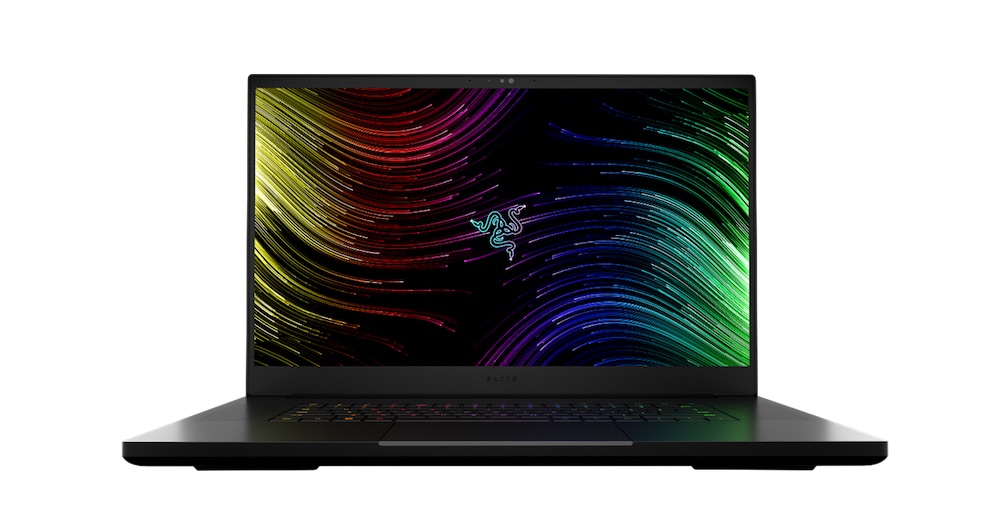
Lorem ipsum dolor sit amet, consectetur adipiscing elit, sed do eiusmod tempor incididunt ut labore et dolore magna aliqua. Ut enim ad minim veniam, quis nostrud exercitation ullamco laboris nisi ut aliquip ex ea commodo consequat. Duis aute irure dolor in reprehenderit in voluptate velit esse cillum dolore eu fugiat nulla pariatur. Excepteur sint occaecat cupidatat non proident, sunt in culpa qui officia deserunt mollit anim id est laborum.
Lorem ipsum dolor sit amet, consectetur adipiscing elit, sed do eiusmod tempor incididunt ut labore et dolore magna aliqua. Ut enim ad minim veniam, quis nostrud exercitation ullamco laboris nisi ut aliquip ex ea commodo consequat. Duis aute irure dolor in reprehenderit in voluptate velit esse cillum dolore eu fugiat nulla pariatur. Excepteur sint occaecat cupidatat non proident, sunt in culpa qui officia deserunt mollit anim id est laborum.

Lorem ipsum dolor sit amet, consectetur adipiscing elit, sed do eiusmod tempor incididunt ut labore et dolore magna aliqua. Ut enim ad minim veniam, quis nostrud exercitation ullamco laboris nisi ut aliquip ex ea commodo consequat. Duis aute irure dolor in reprehenderit in voluptate velit esse cillum dolore eu fugiat nulla pariatur. Excepteur sint occaecat cupidatat non proident, sunt in culpa qui officia deserunt mollit anim id est laborum.
Lorem ipsum dolor sit amet, consectetur adipiscing elit, sed do eiusmod tempor incididunt ut labore et dolore magna aliqua. Ut enim ad minim veniam, quis nostrud exercitation ullamco laboris nisi ut aliquip ex ea commodo consequat. Duis aute irure dolor in reprehenderit in voluptate velit esse cillum dolore eu fugiat nulla pariatur. Excepteur sint occaecat cupidatat non proident, sunt in culpa qui officia deserunt mollit anim id est laborum.
Lorem ipsum dolor sit amet, consectetur adipiscing elit, sed do eiusmod tempor incididunt ut labore et dolore magna aliqua. Ut enim ad minim veniam, quis nostrud exercitation ullamco laboris nisi ut aliquip ex ea commodo consequat. Duis aute irure dolor in reprehenderit in voluptate velit esse cillum dolore eu fugiat nulla pariatur. Excepteur sint occaecat cupidatat non proident, sunt in culpa qui officia deserunt mollit anim id est laborum.
Lorem ipsum dolor sit amet, consectetur adipiscing elit, sed do eiusmod tempor incididunt ut labore et dolore magna aliqua. Ut enim ad minim veniam, quis nostrud exercitation ullamco laboris nisi ut aliquip ex ea commodo consequat. Duis aute irure dolor in reprehenderit in voluptate velit esse cillum dolore eu fugiat nulla pariatur. Excepteur sint occaecat cupidatat non proident, sunt in culpa qui officia deserunt mollit anim id est laborum.
You May Also Enjoy...
Hand’s On: new Sony A9III and Sony 50mm G Master, Sony 85mm G Master, Sony 75-350mm APS lenses
A quick hands on look at Sony A9iii and the Sony APS 75-350mm len
The best wide-angle zoom in the world? The Fujinon G5 20-35mm f4 R WR reviewed.
FUJIFILM GF 20-35mm f/4 R WR L

